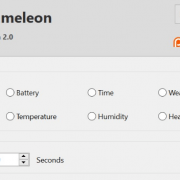Base64 encoder
Содержание:
- Обработка «Распознавание штрихкода с помощью утилиты Zbar» для Документооборот ред. 2
- Кодирование Base64
- Usage #
- Рабочее место менеджера по продажам
- Кодирование/Декодирование С Использованием Кодека Apache Commons
- Преобразование строки в массив байтов
- Base64 Image Data URL Scheme
- More Info and Resources
- How base64 encoding works?
- Алгоритм работы
- Benchmarks
- About
- Реализация декодирования
- Latest From The Blog
- Description #
Обработка «Распознавание штрихкода с помощью утилиты Zbar» для Документооборот ред. 2
В связи с тем, что стандартный функционал программы «Документооборот» ред. 2.1 дает возможность распознавания штрихкодов только форма EAN-13, данная обработка — альтернативный способ для распознавания штрихкода в программе 1С: Документооборот ред. 2 с помощью утилиты Zbar, которая распознает в том числе и в формате Code 128 (один из стандартных штрихкодов кодирования документов, например, «Управление торговлей» ред. 11), а также с возможностью поэтапно проследить все действия от распознавания до прикрепления к документу или простой загрузки в каталоги файлов в базе 1С.
5 стартмани
Кодирование Base64
Кодирование Base64 – это процесс преобразования двоичных данных в набор символов, ограниченный 64 символами. Как мы уже говорили в первом разделе, это символы A-Z, a-z, 0-9, + и / (Вы посчитали их? Вы заметили, что в сумме они составляют 64?). Этот набор символов считается наиболее распространенным и известен как Base64 в MIME. Он использует A-Z, a-z, 0-9, + и / для первых 62 значений и + и / для последних двух значений.
Закодированные в Base64 данные в итоге оказываются больше исходных данных, поэтому, как мы уже говорили, на каждые 3 байта двоичных данных приходится как минимум 4 байта закодированных в Base64 данных. Это связано с тем, что вы сжимаете данные в меньший набор символов.
Вы когда-нибудь видели необработанный файл электронной почты, подобный тому, который показан ниже? Если да, то вы видели кодирование Base64 в действии.
Кодирование Base64 выполняется в несколько этапов:
- Текст, который необходимо закодировать, преобразуется в соответствующие десятичные значения, т.е. в его ASCII-эквивалент (например, a: 97, b: 98 и т.д.).
- Десятичные значения, полученные на предыдущем этапе, преобразуются в их двоичные эквиваленты (т.е. 97: 01100001).
- Все двоичные эквиваленты объединяются, в результате чего получается большой набор двоичных чисел.
- Большой набор двоичных чисел разделен на равные части. Каждая секция должна содержать только 6 бит.
- Равные наборы из 6 битов преобразуются в их десятичные эквиваленты.
- Наконец, десятичные эквиваленты преобразуются в свои значения Base 64 (т.е. 4:E).
Usage #
Online Encoders and Decoders makes it simple to encode or decode data.
Firstly, choose the type of encoding tool in the Tool field.
Then, using the Input type field, choose whether you want to
use a text string as an input or a file. Type your input to the Text
string field or select the input file through the
File field and finally, hit the «Encode!» or the «Decode!»
button. If you click the «Encode!» button it is assumed that the input is
not encoded and you want to encode it. If you click the «Decode!» button it
is assumed that the input is encoded and you want to decode it.
In case of Code page Encoder/Decoder tool, you also have to
choose the source code page and the target code page. This tool has only
one button – the «Convert!» button, which does the conversion of the
input data from the source code page encoding to the target code page
encoding.
In case of IDN Encoder/Decoder tool, you can encode or decode more
domains at once if each domain is on a separate line.
In case of Uuencoder/Uudecoder tool, use Add header line
(encoding only) check box to specify whether you want
Uuencoder’s output to contain a uuencoding header. Uudecoder works
automatically with both formats of input with and without a header.
For your convenience, the Switch input and output! link
is available, if applicable, after a tool is run. The link exchanges contents of the output
field with the input text field. In some cases switching of input and
output is disabled.
Рабочее место менеджера по продажам
Каждый день менеджеры создают кучу документов. Это и заказы покупателей и сопутствующие документы, которые создаются на основании. Менеджеру всегда необходимо иметь под рукой наиболее эффективный инструмент для формирования заявки от покупателя. Таковым я постарался сделать и эту обработку.
Обработка «Рабочее место менеджера продаж» позволяет быстро узнать информацию о товарах на складах, цены товара в различных типах цен номенклатуры, узнать какие цены у поставщиков по выбранному товару и так далее.
Много месяцев текущая обработка работает на благо сотрудников и приносит действительно большую пользу. Правда, она более внедрена в работу организации, но даже её модифицированная часть для общества должна принести не менее выгоды в работе с товарами и и заказами покупателей. Так что вот она.
5 стартмани
Кодирование/Декодирование С Использованием Кодека Apache Commons
Во-первых, нам нужно определить зависимость commons-codec в pom.xml :
commons-codeccommons-codec1.10
Обратите внимание, что мы можем проверить, были ли выпущены более новые версии библиотеки на. Основным API является класс org.apache.commons.codec.binary.Base64 , который может быть параметризован с помощью различных конструкторов:
Основным API является класс org.apache.commons.codec.binary.Base64 , который может быть параметризован с помощью различных конструкторов:
- Base64(boolean urlSafe) создает API Base64, управляя включенным или выключенным режимом URL-safe.
- Base64 (int lineLength) создает API Base64 в небезопасном для URL режиме и управляет длиной строки (по умолчанию 76).
- Base64(int lineLength, byte[] LineSeparator) создает API Base64, принимая дополнительный разделитель строк, который по умолчанию является CRLF (“\r\n”).
После создания API Base64 и кодирование, и декодирование довольно просты:
String originalInput = "test input"; Base64 base64 = new Base64(); String encodedString = new String(base64.encode(originalInput.getBytes()));
Метод decode() класса Base64 возвращает декодированную строку:
String decodedString = new String(base64.decode(encodedString.getBytes()));
Другим простым вариантом является использование статического API Base64 |/вместо создания экземпляра:
String originalInput = "test input"; String encodedString = new String(Base64.encodeBase64(originalInput.getBytes())); String decodedString = new String(Base64.decodeBase64(encodedString.getBytes()));
Преобразование строки в массив байтов
Иногда нам нужно преобразовать Строку в байт[] . Самый простой способ сделать это-использовать метод String getBytes() :
String originalInput = "test input"; byte[] result = originalInput.getBytes(); assertEquals(originalInput.length(), result.length);
String originalInput = "test input"; byte[] result = originalInput.getBytes(StandardCharsets.UTF_16); assertTrue(originalInput.length() < result.length);
Если наша строка Base64 закодирована, мы можем использовать декодер Base64 |:
String originalInput = "dGVzdCBpbnB1dA==";
byte[] result = Base64.getDecoder().decode(originalInput);
assertEquals("test input", new String(result));
Мы также можем использовать DatatypeConverter parseBase64Binary() метод :
String originalInput = "dGVzdCBpbnB1dA==";
byte[] result = DatatypeConverter.parseBase64Binary(originalInput);
assertEquals("test input", new String(result));
Наконец, мы можем преобразовать шестнадцатеричную строку в байт[] с помощью метода DatatypeConverter :
String originalInput = "7465737420696E707574";
byte[] result = DatatypeConverter.parseHexBinary(originalInput);
assertEquals("test input", new String(result));
Base64 Image Data URL Scheme
Some applications that use URLs also have a need to embed (small) media type data directly inline. This document defines a new URL scheme that would work like ‘immediate addressing’. The URLs are of the form:
The is an Internet media type specification (with optional parameters.) The appearance of «» means that the data is encoded as base64. Without «», the data (as a sequence of octets) is represented using ASCII encoding for octets inside the range of safe URL characters and using the standard hex encoding of URLs for octets outside that range. If is omitted, it defaults to . As a shorthand, «» can be omitted but the charset parameter supplied.
The «» URL scheme is only useful for short values. Note that some applications that use URLs may impose a length limit; for example, URLs embedded within anchors in HTML have a length limit determined by the SGML declaration for HTML . The LITLEN (1024) limits the number of characters which can appear in a single
attribute value literal, the ATTSPLEN (2100) limits the sum of all lengths of all attribute value specifications which appear in a tag, and the TAGLEN (2100) limits the overall length of a tag.
Data URL Scheme Syntax
dataurl := "data:" "," data mediatype := [ type "/" subtype ] *( ";" parameter ) data := *urlchar parameter := attribute "=" value
More Info and Resources
The Base 64 Alphabet
Value Encoding Value Encoding Value Encoding Value Encoding
0 A 17 R 34 i 51 z
1 B 18 S 35 j 52 0
2 C 19 T 36 k 53 1
3 D 20 U 37 l 54 2
4 E 21 V 38 m 55 3
5 F 22 W 39 n 56 4
6 G 23 X 40 o 57 5
7 H 24 Y 41 p 58 6
8 I 25 Z 42 q 59 7
9 J 26 a 43 r 60 8
10 K 27 b 44 s 61 9
11 L 28 c 45 t 62 +
12 M 29 d 46 u 63 /
13 N 30 e 47 v
14 O 31 f 48 w (pad) =
15 P 32 g 49 x
16 Q 33 h 50 y
RFC’s
- RFC 1866 — Hypertext Markup Language — 2.0
- RFC 2045 — Multipurpose Internet Mail Extensions (MIME) Part One: Format of Internet Message Bodies
- RFC 2046 — Definition of media types
- RFC 2077 — Model top-level media type
- RFC 2396 — Uniform Resource Identifiers (URI): Generic Syntax
- RFC 2397 — The «data» URL scheme
- RFC 3023 — Media types based on XML
- RFC 4648 — The Base16, Base32, and Base64 Data Encodings
- RFC 6657 — Update to MIME regarding «charset» Parameter Handling in Textual Media Types
- RFC 5988 — Web Linking
Type image
- GIF image; Defined in RFC 2045 and RFC 2046
- JPEG JFIF image; Defined in RFC 2045 and RFC 2046
- JPEG JFIF image; Associated with Internet Explorer; Listed in ms775147(v=vs.85) — Progressive JPEG, initiated before global browser support for progressive JPEGs (Microsoft and Firefox).
- Portable Network Graphics; Registered, Defined in RFC 2083
- SVG vector image; Defined in SVG Tiny 1.2 Specification Appendix M
- Tag Image File Format (only for Baseline TIFF); Defined in RFC 3302
- ICO image; Registered
Misc
- Image to data URI convertor
- : Your one-stop HTML5 spot for all things Data URL
- The data: URI kitchen
- php: data://
- Using Data URLs Effectively with Cascading Style Sheets
- getID3: PHP script that extracts useful information from MP3s & other multimedia file formats:
How base64 encoding works?
Base64 encode example A.
× Let’s begin with a string «Base64»
| B | a | s | e | 6 | 4 |
× Hexadecimal representation:
| 42 | 61 | 73 | 65 | 36 | 34 |
× Binary representation: Binary converter
| 01000010 | 01100001 | 01110011 | 01100101 | 00110110 | 00110100 |
× Now we need to split the result in groups of 6 bits.
| 010000 | 100110 | 000101 | 110011 | 011001 | 010011 | 011000 | 110100 |
× Next, convert the groups of 6 bits into decimal representation.
| 16 | 38 | 5 | 51 | 25 | 19 | 24 | 52 |
× Now we can use the to convert the decimal values into base64 equivalent.
| Q | m | F | z | Z | T | Y |
Base64 encode example B.
× We will split the string «Base64» into two smaller strings: «Ba» and «se64» and encode it into Base64.So, we have:
| B | a |
× Hexadecimal representation:
| 42 | 61 |
× Binary representation:
| 01000010 | 01100001 |
× We can split it in two groups of 6 bits. But the last group is only 4 bits long,so we need to add two extra bits of ‘0’ and remember it by putting a ‘=’ at the end.
| 010000 | 100110 | 000100 |
× In decimal:
| 16 | 38 | 4 |
× Base64 encoded equivalent:
| Q | m | E | = |
Base64 encode example C.
| s | e | 6 | 4 |
× Hexadecimal representation:
| 73 | 65 | 36 | 34 |
× Binary representation:
| 01110011 | 01100101 | 00110110 | 00110100 |
× Splitted in groups of 6 bits. The last group contains only two bits.Because of this we need to add four extra bits of ‘0’ and put two ‘=’ at the end.
| 011100 | 110110 | 010100 | 110110 | 001101 | 000000 |
× Base64 encoded string will be:
| c | 2 | U | 2 | N | A== |
Алгоритм работы
Изначально на вход поступает массив байт, каждый байт — это число от до 255, то есть максимальное количество бит в числе равно восьми (255 в двоичной системе счисления это 11111111). Необходимо взять 3 байта, это 24 бита, которые разбивают на 4 части – по 6 бит. Число из 6 бит (в десятичной системе) и будет представлять из себя очередной индекс в таблице для получения символа кодирования (6 бит – в двоичном виде 111111, в десятичном виде это число 63). Если размер исходного массива не кратен 3, тогда итоговую строку следует дополнить символом до размера кратного 3.
В качестве примера, продемонстрирую как происходит кодирование строки «». Для начала, необходимо получить массив байт, это будет 4 десятичных числа 100, 101, 109, 111. В двоичном виде это значения 1100100, 1100101, 1101101, 1101111.
Дополним количество бит в числах до 8, и разобьём на группы по 6 бит. Получим значения 011001, 000110, 010101, 101101, 011011, 110000. Переведём в десятичную систему счисления, получим числа 25, 6, 21, 45, 27, 48. Взяв символы из таблицы Base64 символов по данным индексам, получим строку . Во входящем массиве байт было 4 числа. Четыре не кратно трём, остаток от деления на три будет 1. Если остаток 1, то нужно дополнить двумя символами , если остаток будет 2, то дополнить одним символом . В данном случае дополнив имеющуюся строку .
Дополнив строку, получаем результат . Это и есть Base64 строка, полученная из строки «».
Наглядно процесс кодирования можно увидеть ниже:

Декодирование информации из Base64 строки представляет из себя обратный процесс. Нам необходимо разбить строку по 4 символа, получить их значения из таблицы символов Base64, затем полученную группу из 24 бит необходимо разбить на 3 части – получится 3 значения по 8 бит, которые мы помещаем в массив байт. Повторять данный процесс необходимо до конца имеющейся строки. Символ не будет участвовать в процессе, он будет только показывать, какое количество бит необходимо взять из конца строки.
Демонстрацию процесса декодирования можно увидеть ниже:

Benchmarks
Benchmarks can be run with the built-in benchmark program as follows:
make -C test benchmark <buildflags> && test/benchmark
It will run an encoding and decoding benchmark for all of the compiled-in codecs.
The tables below contain some results on random machines. All numbers measured with a 10MB buffer in MB/sec, rounded to the nearest integer.
*: Update needed
x86 processors
| Processor | Plain enc | Plain dec | SSSE3 enc | SSSE3 dec | AVX enc | AVX dec | AVX2 enc | AVX2 dec |
|---|---|---|---|---|---|---|---|---|
| i7-4771 @ 3.5 GHz | 833* | 1111* | 3333* | 4444* | TBD | TBD | 4999* | 6666* |
| i7-4770 @ 3.4 GHz DDR1600 | 1790* | 3038* | 4899* | 4043* | 4796* | 5709* | 4681* | 6386* |
| i7-4770 @ 3.4 GHz DDR1600 OPENMP 1 thread | 1784* | 3041* | 4945* | 4035* | 4776* | 5719* | 4661* | 6294* |
| i7-4770 @ 3.4 GHz DDR1600 OPENMP 2 thread | 3401* | 5729* | 5489* | 7444* | 5003* | 8624* | 5105* | 8558* |
| i7-4770 @ 3.4 GHz DDR1600 OPENMP 4 thread | 4884* | 7099* | 4917* | 7057* | 4799* | 7143* | 4902* | 7219* |
| i7-4770 @ 3.4 GHz DDR1600 OPENMP 8 thread | 5212* | 8849* | 5284* | 9099* | 5289* | 9220* | 4849* | 9200* |
| i7-4870HQ @ 2.5 GHz | 1471* | 3066* | 6721* | 6962* | 7015* | 8267* | 8328* | 11576* |
| i5-4590S @ 3.0 GHz | 3356 | 3197 | 4363 | 6104 | 4243 | 6233 | 4160 | 6344 |
| Xeon X5570 @ 2.93 GHz | 2161 | 1508 | 3160 | 3915 | — | — | — | — |
| Pentium4 @ 3.4 GHz | 896 | 740 | — | — | — | — | — | — |
| Atom N270 | 243 | 266 | 508 | 387 | — | — | — | — |
| AMD E-450 | 645 | 564 | 625 | 634 | — | — | — | — |
| Intel Edison @ 500 MHz | 79* | 92* | 152* | 172* | — | — | — | — |
| Intel Edison @ 500 MHz OPENMP 2 thread | 158* | 184* | 300* | 343* | — | — | — | — |
| Intel Edison @ 500 MHz (x86-64) | 97* | 146* | 197* | 207* | — | — | — | — |
| Intel Edison @ 500 MHz (x86-64) 2 thread | 193* | 288* | 389* | 410* | — | — | — | — |
ARM processors
| Processor | Plain enc | Plain dec | NEON32 enc | NEON32 dec | NEON64 enc | NEON64 dec |
|---|---|---|---|---|---|---|
| Raspberry PI B+ V1.2 | 46* | 40* | — | — | — | — |
| Raspberry PI 2 B V1.1 | 85 | 141 | 282 | 225 | — | — |
| Apple iPhone SE armv7 | 1056* | 895* | 2943* | 2618* | — | — |
| Apple iPhone SE arm64 | 1061* | 1239* | — | — | 4098* | 3983* |
PowerPC processors
| Processor | Plain enc | Plain dec |
|---|---|---|
| PowerPC E6500 @ 1.8GHz | 270* | 265* |
Benchmarks on i7-4770 @ 3.4 GHz DDR1600 with varrying buffer sizes:

Note: optimal buffer size to take advantage of the cache is in the range of 100 kB to 1 MB, leading to 12x faster AVX encoding/decoding compared to Plain, or a throughput of 24/27GB/sec.
Also note the performance degradation when the buffer size is less than 10 kB due to thread creation overhead.
To prevent this from happening defines , requiring at least a 20000 byte buffer to enable multithreading.
About
- Character set: Our website uses the UTF-8 character set, so your input data is transmitted in that format. Change this option if you want to convert the data to another character set before encoding. Note that in case of text data, the encoding scheme does not contain the character set, so you may have to specify the appropriate set during the decoding process. As for files, the binary option is the default, which will omit any conversion; this option is required for everything except plain text documents.
- Newline separator: Unix and Windows systems use different line break characters, so prior to encoding either variant will be replaced within your data by the selected option. For the files section, this is partially irrelevant since files already contain the corresponding separators, but you can define which one to use for the «encode each line separately» and «split lines into chunks» functions.
- Encode each line separately: Even newline characters are converted to their Base64 encoded forms. Use this option if you want to encode multiple independent data entries separated with line breaks. (*)
- Split lines into chunks: The encoded data will become a continuous text without any whitespaces, so check this option if you want to break it up into multiple lines. The applied character limit is defined in the MIME (RFC 2045) specification, which states that the encoded lines must be no more than 76 characters long. (*)
- Perform URL-safe encoding: Using standard Base64 in URLs requires encoding of «+», «/» and «=» characters into their percent-encoded form, which makes the string unnecessarily longer. Enable this option to encode into an URL- and filename- friendly Base64 variant (RFC 4648 / Base64URL) where the «+» and «/» characters are respectively replaced by «-» and «_», as well as the padding «=» signs are omitted.
- Live mode: When you turn on this option the entered data is encoded immediately with your browser’s built-in JavaScript functions, without sending any information to our servers. Currently this mode supports only the UTF-8 character set.
(*) These options cannot be enabled simultaneously since the resulting output would not be valid for the majority of applications.Safe and secureCompletely freeDetails of the Base64 encodingDesignExampleMan is distinguished, not only by his reason, but …ManTWFu
| Text content | M | a | n | |||||||||
|---|---|---|---|---|---|---|---|---|---|---|---|---|
| ASCII | 77 | 97 | 110 | |||||||||
| Bit pattern | 1 | 1 | 1 | 1 | 1 | 1 | 1 | 1 | 1 | 1 | 1 | 1 |
| Index | 19 | 22 | 5 | 46 | ||||||||
| Base64-encoded | T | W | F | u |
Реализация декодирования
Декодирование реализуется гораздо проще. При использовании LINQ без необходимости оптимизаций скорости алгоритм на C# может представлять из себя следующее:
Dictionary<char, int> base64DIctionary = new Dictionary<char, int>()
{
{'A', 0 },{'B', 1 },{'C', 2 },{'D', 3 },{'E', 4 },{'F', 5 },{'G', 6 },{'H', 7 },{'I', 8 },{'J', 9 },{'K', 10 },{'L', 11 },{'M', 12 },{'N', 13 },{'O', 14 },{'P', 15 },{'Q', 16 },{'R', 17 },{'S', 18 },{'T', 19 },{'U', 20 },{'V', 21 },{'W', 22 },{'X', 23 },{'Y', 24 },{'Z', 25 },{'a', 26 },{'b', 27 },{'c', 28 },{'d', 29 },{'e', 30 },{'f', 31 },{'g', 32 },{'h', 33 },{'i', 34 },{'j', 35 },{'k', 36 },{'l', 37 },{'m', 38 },{'n', 39 },{'o', 40 },{'p', 41 },{'q', 42 },{'r', 43 },{'s', 44 },{'t', 45 },{'u', 46 },{'v', 47 },{'w', 48 },{'x', 49 },{'y', 50 },{'z', 51 },{'0', 52 },{'1', 53 },{'2', 54 },{'3', 55 },{'4', 56 },{'5', 57 },{'6', 58 },{'7', 59 },{'8', 60 },{'9', 61 },{'+', 62 },{'/', 63 },{'=', -1 }
};
public byte[] FromBase64Custom(string str)
{
var allBytes = string.Join("", str.Where(x => x != '=').Select(x => Convert.ToString(base64DIctionary, 2).PadLeft(6, '0')));
var countOfBytes = allBytes.Count();
return Enumerable.Range(0, countOfBytes / 8).Select(x => allBytes.Substring(x * 8, 8)).Select(x => Convert.ToByte(x, 2)).ToArray();
}
Здесь всё то же самое что и с кодированием – подобная реализация проста для понимания, но ни в коем случае нельзя её использовать для реальных проектов, так как скорость работы данного алгоритма недопустимо медленна.
Вот что показало тестирование скорости работы в BenchmarkDotNet при сравнении с реализацией в :

Разница в скорости работы примерно в 60 раз.
Если же опять отказаться от LINQ, добавить работу с битами и убрать лишние вызовы, получится что-то похожее:
public unsafe byte[] FromBase64Custom(string str)
{
var length = str.Length;
var countOfEquals = str.EndsWith("==") ? 2 : str.EndsWith("=") ? 1 : 0;
var arraySize = (length - countOfEquals) * 6 / 8;
var result = new byte;
var loopLength = (length / 4) * 4;
var arrayPosition = 0;
var stringPosition = 0;
fixed (char* c = str)
{
fixed (byte* element = result)
{
for (int i = 0; i < loopLength; i += 4)
{
var next = base64DIctionary;
var buf = base64DIctionary;
next = next << 2;
next |= (buf >> 4);
*(element + arrayPosition++) = (byte)next;
next = (buf & 0b001111) << 4;
buf = base64DIctionary;
next |= (buf >> 2);
*(element + arrayPosition++) = (byte)next;
next = (buf & 0b000011) << 6;
buf = base64DIctionary;
next |= buf;
*(element + arrayPosition++) = (byte)next;
}
if (countOfEquals != 0)
{
var cur = loopLength;
if (stringPosition < str.Length)
{
var next = base64DIctionary << 2;
var buf = base64DIctionary;
next |= buf >> 4;
*(element + arrayPosition++) = (byte)next;
if (countOfEquals == 1)
{
next = (buf & 0b001111) << 4;
buf = base64DIctionary;
next |= (buf >> 2);
*(element + arrayPosition) = (byte)next;
}
if (countOfEquals == 2)
{
next = (buf & 0b001111) << 4;
buf = base64DIctionary;
next |= (buf >> 2);
*(element + arrayPosition) = (byte)next;
}
}
}
}
}
return result;
}
Данная реализация так же не является оптимальной, но уже гораздо ближе к ней. Ниже приведены результаты работы бенчмарка:

На реальных проектах, используя .NET технологии для разработки, маловероятно, что вам необходимо будет собственная реализация алгоритма Base64. Но понимание того, как он работает, несомненно является большим плюсом, так как идеи, которые используются для реализации могут быть применены в схожих задачах. Например, именно для ваших целей, может быть эффективен некий аналог с названием Base512 (использующий таблицу доступных символов гораздо большего размера, либо меньшего), либо вам нужно будет использовать другую таблицу символов. Со знанием того, как устроен Base64 реализовать подобное не составит труда. Также стоит иметь ввиду, что многие вещи можно реализовать в C# очень быстро, но всегда нужно думать о производительности ваших алгоритмов, чтобы они не стали «бутылочным горлышком» для ваших приложений. LINQ очень приятно использовать, но за использование данной технологии приходится платить скоростью исполнения самих приложений, и в местах, где критична производительности, следует отказаться от их использования, заменив чем-то более эффективным.
А на этом всё.
Приятного программирования.
Latest From The Blog

What is Base64 Encoding and How does it work?
8 mins
Learn what is Base64 encoding, how does it work, when and why it is used? Base64 is a binary-to-text encoding scheme. It represents binary data in a printable ASCII string format by translating it into a radix-64 representation.

Base64 Encoding a String in Python
2 mins
In this article, you’ll learn how to Base64 encode a string in Python. Python has a module called base64 that contains functions to Base64 encode a sequence of bytes and also decode it back to a string.

Base64 Encoding a String in Javascript
2 mins
In this article, you’ll learn how to encode a string to Base64 encoded format. Javascript has a built-in function named btoa() that you can use to perform Base64 encoding. However, the btoa() function doesn’t recognize DOMStrings which are 16-bit encoded. To encode DOMStrings, you need to convert the UTF-16 DOMStrings to UTF-8 array of characters.

Base64 Encoding a String in Java
4 mins
In this article, you’ll learn how to Base64 Encode a String in Java. Java 8 introduced a new class called Base64 which contains convenience functions to Base64 encode a sequence of bytes and also decode a Base64 encoded string.

Base64 Encoding a String in Golang
2 mins
Learn how to Base64 encode a string in Go. Go contains a package called «encoding/base64» that has various functions to Base64 encode a sequence of bytes and also decode a Base64 encoded string.
Description #
Online Encoders and Decoders consists of several tools that allow you to
encode or decode data using various methods. Our implementation supports
both the text string input and the file input. If the data you want to
encode or decode are in the form of a short string we recommend using the
text string input. On the other hand for larger input data we recommend you
to use a file as an input. On the output you are given the result in the
form of a text or a hex dump, depending on the contents of the output, as
well as in the form of a file that you can download. In case of large
outputs the plain text output or the hex dump output may be truncated. The
file output is always complete.
A brief description of available tools follows:
-
Base64 Encoder is a tool that helps you convert binary data
to ASCII string format that uses 64 printable ASCII characters.
The Base64 encoding is typically used for transfering email messages because email formats does not support binary data. -
URL Encoder encodes unsafe characters so that the
output can be used as a valid part of a URL. Unsafe characters are in most cases replaced with hexadecimal codes
(). -
IDN Encoder converts Internationalised
Domain Names (IDNs) to Punycode representation which consists of
ASCII characters and the prefix . The
conversion of an IDN domain to Punycode is necessary in order for the Domain
Name System (DNS) to understand and manage the names. For example,
is converted to
. -
Uuencoder is a tool that converts to
and from
uuencoding.
The uuencoding is a binary to ASCII encoding that comes from Unix
where it was used for transmitting of binary files on the top of text-based protocols. -
Code page Encoder converts text data from one encoding to another one.
Note that source code page for text inputs is always UTF-8. If you want to use another source code page, please use file input. -
XML Encoder encodes all characters with
their corresponding XML entities if such entity exists. For example,
,
and
are
converted to ,
and
, correspondingly -
Bin-Hex Encoder is a tool that is similar to Base64 Encoder. The difference between tools is that
Bin-Hex Encoder employs Base16 encoding (a string of hexadecimal digits) instead of Base64.





